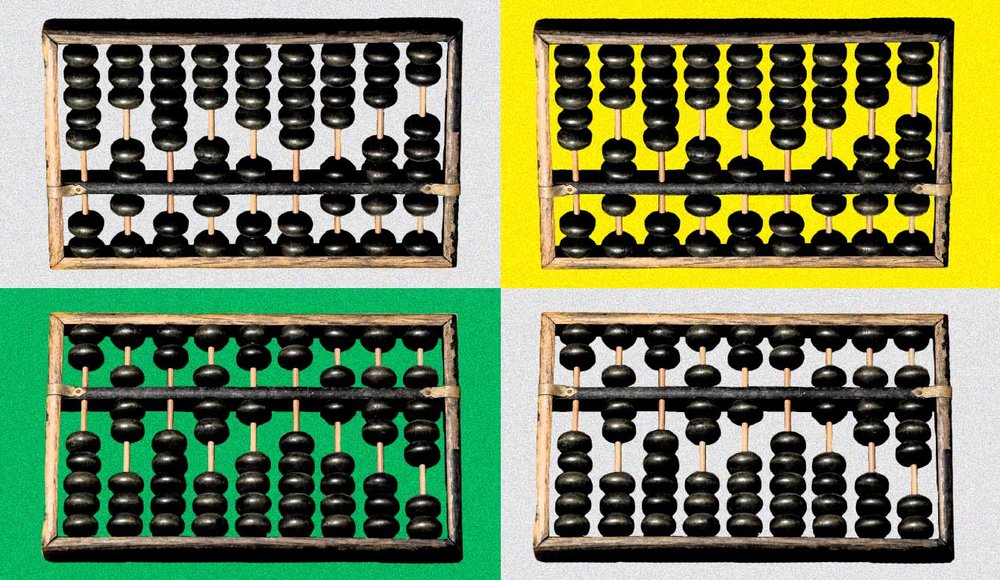1080 words – 5:24 read time
 Illustration, Tom Miller
Illustration, Tom Miller
One of the primary goals of accounting is to provide business managers with actionable information.
It follows then, that when accounting is done incorrectly it can obfuscate important elements of business health, which can result in poor decision-making. The goal of this article is to highlight a common accounting error in contracting businesses and show how it can cause unintended consequences in decision-making.
Before I go further, I must disclaim that this article is for informational purposes only and is not intended to be construed as professional accounting advice—if you think you might be making the mistake described in this article, please talk to your accountant before you proceed with changing your accounting method. Ideally, also choose an accountant that thoroughly understands the unique circumstances of contracting.
Ok, so:
The common accounting issue at hand is booking job deposits as income.
When a contractor sells a project, it is common to require a deposit from the end-customer. For many contractors, this deposit is 30-50% of the project value, justified as needed to purchase materials for the job and do various pre-site tasks like design, permitting, staging, and mobilization.
If this initial deposit is booked as income it can cause the Income Statement (Profit and Loss or P&L) to be misleading. That is because this deposit could be booked far in advance of incurring any costs on the project, causing income to grow disproportionately to Direct Costs for that job (Cost of Goods Sold (COGS), and Job Labor). If income is booked substantially in advance of Direct Costs, gross profit will appear to be significantly higher than it actually is.
The Balance Sheet will also reflect this booking in a couple of misleading ways. The “excess” income will cause retained earnings (a category of Equity) to be overstated, and job deposits (categorized as a Liability) will be non-existent. While cash depicted on the Balance Sheet should still be accurate, some contractors will show job deposits as “restricted” cash.
Won’t the costs catch up?
Not necessarily. In a company that is growing, or—more to the point—in a company whose backlog is growing, the new deposits will outpace the accrual of COGS and Labor. Only when new sales slow down will the Income Statement show a reckoning—and then it could be too late.
Let’s look at a simple example
- Each job is sold for $20,000
- The contractor takes a 30% deposit ($6,000), leaving 70% ($14,000) to
bill when the job is complete. - Cost of Goods is $12,500
- Labor to install the job is $3,000
- Those costs leave a Gross Profit of $4,500
Now let’s look side by side at a typical month with incorrect and correct accounting, in which the company sells 12 jobs and installs 8:
| 1 MONTH | Incorrect Accounting | Correct Accounting |
|---|---|---|
| “Income” from deposits | $72,000 | – |
| Income from completed jobs | $112,000 | $160,000 |
| Total Income | $184,000 | $160,000 |
| COGS | $100,000 | $100,000 |
| Labor | $24,000 | $24,000 |
Basically, in the “incorrect” example, the 30% deposit is booked as Income on 12 jobs instead of 8, resulting in an increase of $24,000 in both income and gross profit.
If you extend this accounting over 6 months, with the backlog growing by 4 jobs each month, you end up showing $144,000 in gross profit that has not yet been “earned” by the company.
If the company increases its overhead based on the “incorrect” example—say, by buying additional trucks and equipment, increasing marketing activities, increasing sales commissions, or moving into a larger office—it could easily spend more than it earns. And as long as sales are increasing, maybe no one would notice.
“If the company increases its overhead based on the ‘incorrect’ example…it could easily spend more than it earns.”
The Company could also choose to decrease its margins, by decreasing the contract price, in order to increase sales. The impact of this decision would not be apparent in the Income Statement, as reducing margins could result in unprofitable jobs, or the inability to cover the Company’s overhead—but as long as deposits keep coming in—and especially if they come in at a higher rate because of the lowered prices—how would the leadership team know?
And, with the business growing, the Company may also decide to apply for more credit, apply for a loan, or bring on an investor. Taking on debt could accelerate running out of cash when sales slow down; also, a bank or investor could find the business liable for misrepresenting its financial health.
In the solar industry, we are growing past the days of continuous quarter-over-quarter growth. Sales can easily slow down seasonally or as a result of new legislation, rate structures, or other external factors.
So let’s look at what happens when sales slow down:
Let’s take all the same assumptions as above, except that instead of selling 12 new jobs/month, the company only sells 3:
| 1 MONTH | Incorrect Accounting | Correct Accounting |
|---|---|---|
| “Income” from deposits | $18,000 | – |
| Income from completed jobs | $112,000 | $160,000 |
| Total Income | $130,000 | $160,000 |
| COGS | $100,000 | $100,000 |
| Labor | $24,000 | $24,000 |
Over a 6-month period, the incorrect accounting method shows $180,000 LESS gross profit than the correct scenario. Since the deposits from the eight jobs installed in this example month were already booked as income in a previous period, they are not available to absorb the direct costs associated with installing the eight jobs. Therefore, installing the eight jobs looks less profitable in the incorrect scenario.
What are some questionable decisions that under-stating gross profit might cause?
- Reduce the labor force (reduces achievable income in coming months)
- Increase margins by increasing contract price (could further slow down new sales)
- Reduce sales commissions (could also further slow down new sales)
- Reduce overhead (never a bad idea, but could stress the organization)
- Borrow money (yikes—without actually understanding the problem?)
Imagine if one goes into this 6-month downturn with 40 jobs in backlog—one would emerge with 10. In that case, while the incorrect scenario shows a gross profit problem, there is actually no real problem to address. The installation rate, and therefore “real”
In the correct accounting model, you can see the business is no less profitable when sales slow down! Evaporating backlog may be a problem for the company’s future, but it is not causing a profitability problem today.
To sum up:
Accurate accounting is critical to running a successful contracting business. Entrepreneurs launch many businesses without strong accounting backgrounds, but that’s no excuse—and neither is, “I don’t know, my accountant did it.” It is the business owner’s responsibility (and in my opinion, the responsibility of the entire leadership team) to understand accounting well enough to make sure it’s done right, ask questions, and use it to drive decisions across the organization.
Good luck!





Good stuff!
Thanks John!
Did I miss the solution? Accrual accounting?
Hi Jon,
This problem occurs in either cash or accrual accounting. If the Deposit Invoice is booked to "Income," receiving the deposit will trigger the Income booking in cash accounting, and billing the deposit will trigger the Income booking in accrual accounting.
The solution is the Deposit not getting booked to Income at all, which can be achieved in different ways depending on the accounting software and the other accounting processes. An example of this would be to set up an "Item" in the accounting software called "Job Deposit" that books to a GL Account called "Deposit Liabilities" and does not hit the Income Statement. I’m afraid I can’t take you much farther than that, but it should be enough for a competent accountant to run with.
Does that help?
Boaz